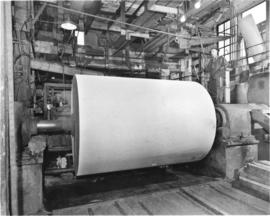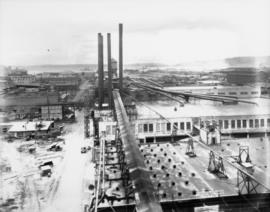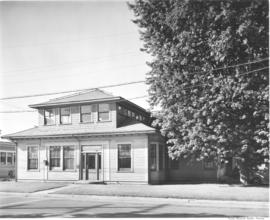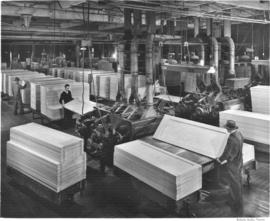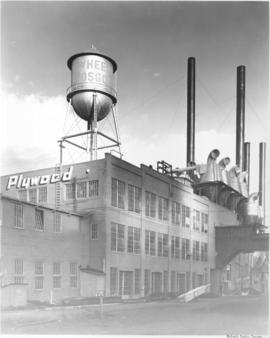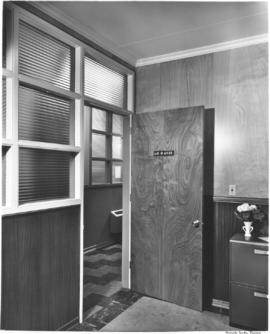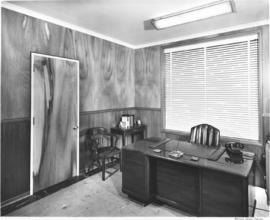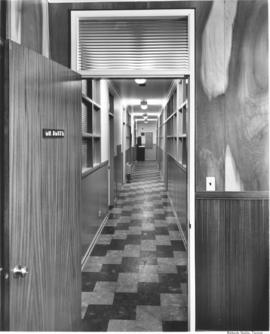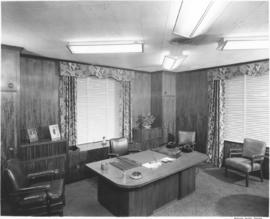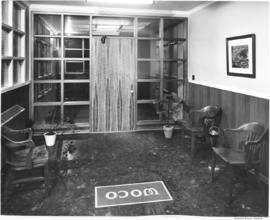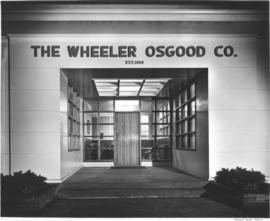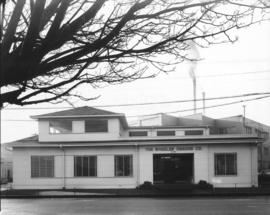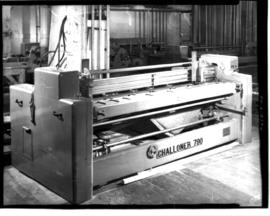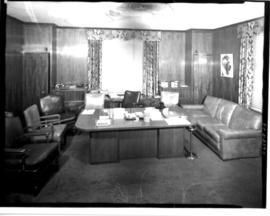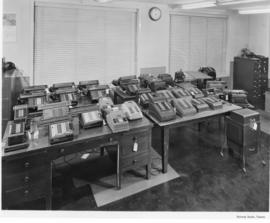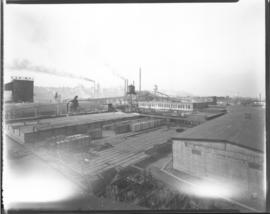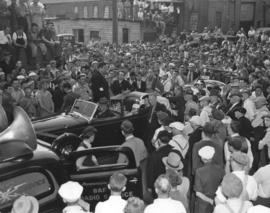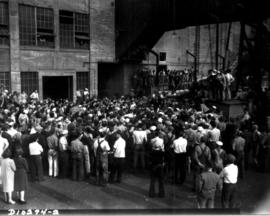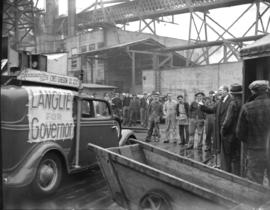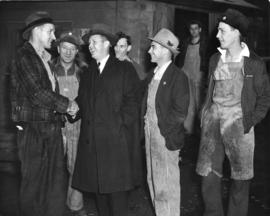His vehicle engulfed by employees of the Wheeler-Osgood Company, Republican candidate for President Wendell Willkie addresses the teeming crowd on September 23, 1940. These working men have climbed on car tops, roofs, and stacks of lumber to view Mr. Willkie. He stands beside the open automobile with a microphone; Mrs. Willkie is in the back seat. Because his time was extremely limited in Tacoma, Mr. Willkie's only stop in the industrial area was the Wheeler-Osgood plant where he inspected the plant for ten minutes and spoke to 200 employees. Selected to run against incumbent President Franklin Delano Roosevelt in 1940, Wendell Willkie was a lawyer and utilities executive as well as a former Democrat. He campaigned against Roosevelt's New Deal and the country's lack of military readiness. Although he was buried by Roosevelt in total electoral votes, he only lost the popular vote by 5 million. He went on to become a close ally of President Roosevelt and was appointed his personal representative in 1941 and 1942 to Britain, the Middle East, USSR and China. ALBUM 2. (T.Times, 9-23-40, p.1, T.Times, 9-24-40, p.1)
Willkie, Wendell, 1892-1944; Political campaigns; Presidential elections--Tacoma--1940-1950; Public speaking--Tacoma--1940-1950; Crowds--Tacoma--1940-1950; Willkie, Edith;
